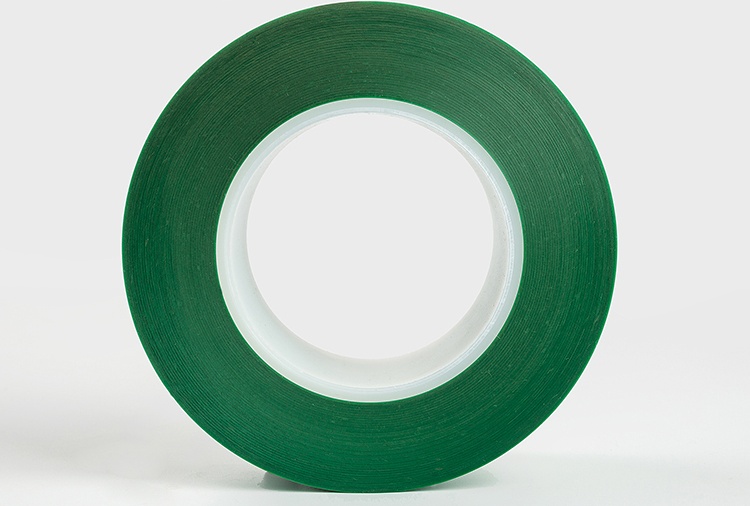
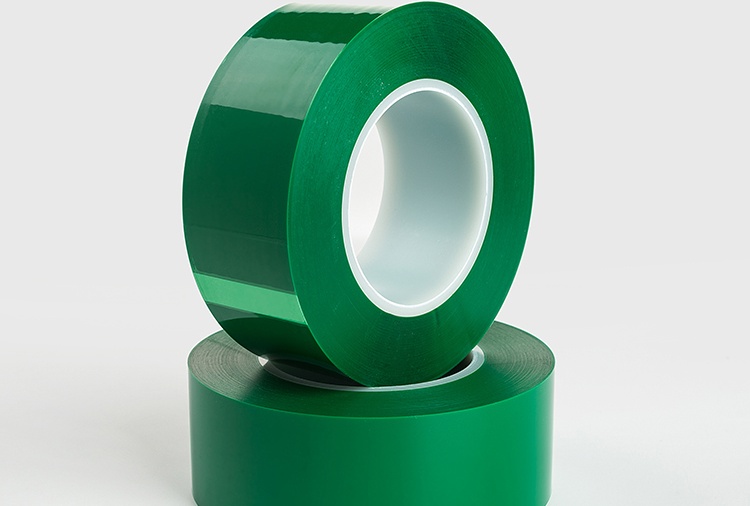
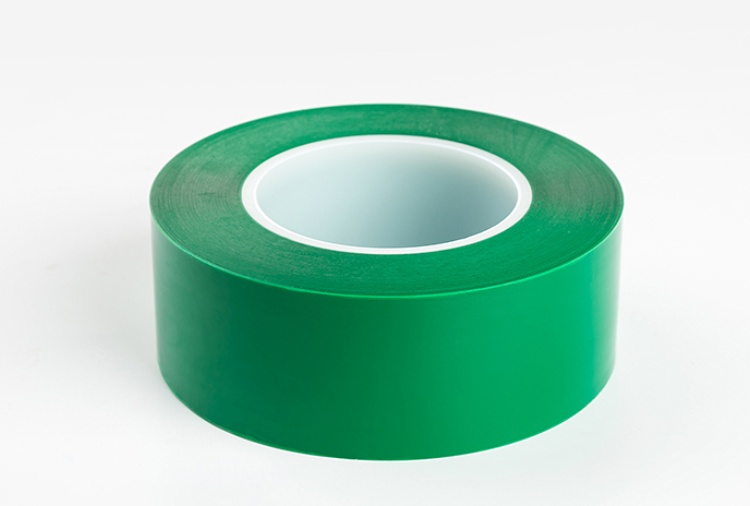
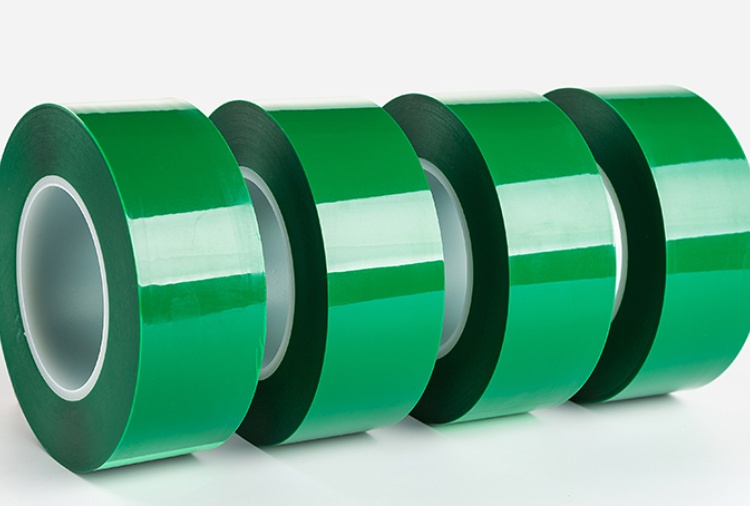
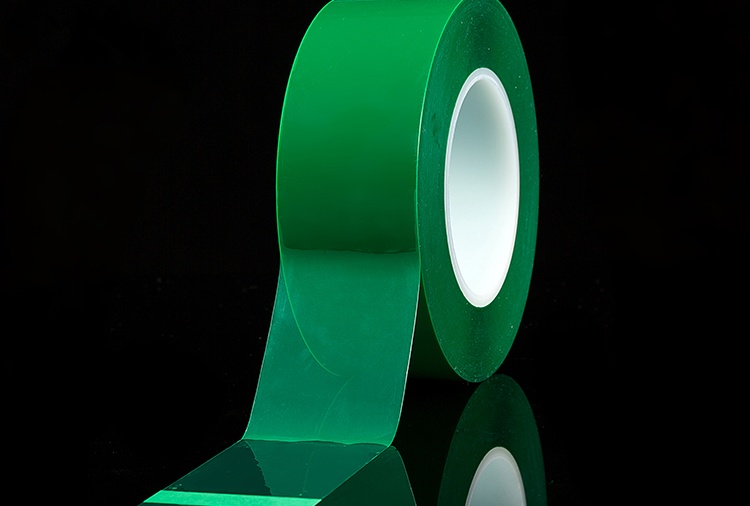
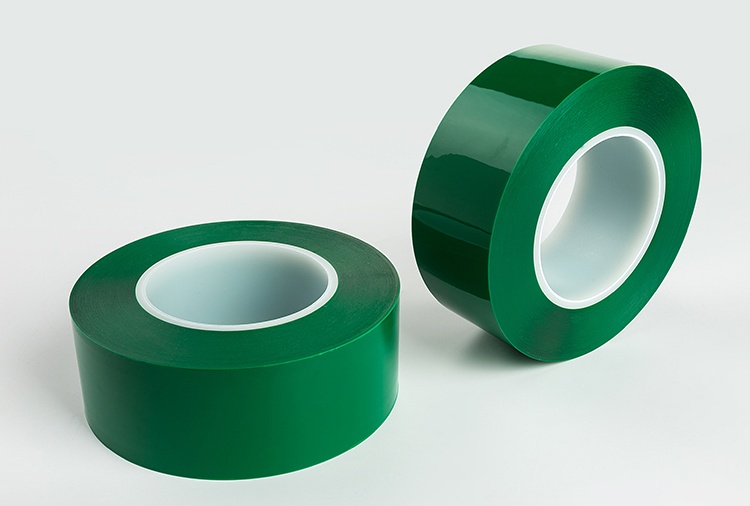
Lithium battery termination tape
High-temperature tape for batteries is made of insulating materials (PP, PET, PI films) as the base material, with a special acrylic adhesive resistant to lithium battery electrolytes coated on it. Its thicknesses are 0.016mm, 0.020mm, 0.03mm, 0.035mm, 0.04mm, and 0.05mm.
Features: High temperature resistance, electrolyte resistance, no warping, no discoloration, and good conformability.
Applications: Termination protection of lithium batteries and wrapping of battery cells.
Detailed description
Lithium battery termination tape uses BOPP film as the base material, coated with electrolyte-resistant pressure-sensitive adhesive, with strong adhesion and good flexibility. It will not curl up when immersed in electrolyte.
Related Specifications
| Name | ltem No.Model | Material | Colour | Adhesive | standard size | Tack | Adhesion Strength | Tensile Resistance | Exten- sibility | Voltagewithstand | Temperature tolerance | ||
| thick/mm | wide/mm | long/m | N | N/25mm | N/25mm | % | ℃ | ||||||
| Lithium battery termination tape | PP03G | BOPP | green | Electrolyte Resistant PSA | 0.035 | 500 | 100/200 | 0.5↑ | 3↑ | 60↑ | 80 | 3kv | 130 |
| Lithium battery termination tape | PP05G | BOPP | green | Electrolyte Resistant PSA | 0.05 | 500 | 100/200 | 3↑ | 7↑ | 60↑ | 80 | 3kv | 130 |
| Lithium battery termination tape | PP02G | PET | green | Electrolyte Resistant PSA | 0.016 | 500 | 100/200 | 3↑ | 7↑ | 60↑ | 80 | 3kv | 130 |
FAQ
Lens Protection Tape Series
Specialized for encapsulating resin eyeglass lenses during high-temperature curing processes. Key features include high transparency, residue-free removal, and heat resistance up to 130°C (e.g., JT8860 for blue-light-blocking lenses)
Lithium Battery Tape Series
Includes termination tapes (for electrode insulation), PACK tapes (bundle fixation), and tab lead tapes (welding point protection). Made from PI/PET films with electrolytic corrosion resistance, critical for cylindrical/pouch cell safety
LED Encapsulation High-Temperature Tape Series
Designed for LED epoxy resin filling and curing (e.g., MY68C transparent tape for digital tubes). Withstands 150–180°C, prevents overflow, and leaves no residue after peeling
Connector Tapes Series
Insulating tapes for electronic connectors and terminals, ensuring stability in soldering (reflow peak: 260–300°C). Commonly uses PI films for dielectric strength
Insulation & Fixation Tapes Series
Glass fiber-reinforced tapes for coil binding in motors/transformers, offering mechanical strength and flame retardancy (180–220°C continuous use)
High-Temperature Double-Sided Tape Series
Features acrylic/silicone adhesives on PI/PET bases. Used for bonding heat sinks, battery modules, and composite materials, withstanding 120–180°C long-term
Masking Tapes Series
Includes high-temp masking paper and PET green tapes for spray painting, powder coating, and PCB gold finger protection. Resists solvents, leaves sharp edges, and operates at 150–230°C
Teflon Tape Series
PTFE-based tapes with ultra-low friction and 260–300°C continuous resistance. Applied in non-stick industrial conveyors, food packaging seals, and chemical equipment lining
Yes, we can develop tailored solutions based on your sketches or ideas to address your business challenges.
The Company serves all customer segments, offering tailored solutions for large enterprises, small businesses, and individual users.
Lithium battery termination tape is typically based on an insulating material such as polypropylene film (PP), polyester film (PET), or polyimide film (PI). It is coated with a specialized acrylic adhesive resistant to lithium battery electrolyte. Its thickness typically ranges from 0.01mm to 0.05mm, and common colors include dark green, grass green, dark green, blue, and yellow.
This tape possesses numerous advantages. It offers strong electrolyte resistance and maintains stability within the chemical environment of lithium batteries. It also provides high electrical insulation, effectively preventing short circuits and enhancing battery safety. Its moderate adhesion allows it to adhere securely to the battery surface while leaving no residue when removed, preventing contamination. Furthermore, the tape’s soft material provides excellent conformability, allowing it to tightly adhere to various curved battery surfaces.
1. Strong electrolyte resistance: Lithium battery termination tape uses a specialized adhesive resistant to lithium battery electrolyte, such as acrylic adhesive. This adhesive can withstand electrolyte immersion and remains stable in the battery’s internal chemical environment, preventing corrosion, swelling, or debonding.
2. High electrical insulation: Made from highly insulating materials such as polypropylene film and polyester film, and with the adhesive also possessing insulating properties, the tape effectively prevents short circuits within the battery, ensuring battery safety.
3. Moderate adhesion: The tape’s viscosity is specially formulated to provide optimal adhesion, allowing it to adhere securely to the battery surface and secure the cells. When the tape needs to be removed, no residual adhesive remains, preventing contamination or damage.
4. Excellent conformability: The tape’s soft, tough material offers excellent conformability, allowing it to tightly adhere to curved surfaces, corners, and other shapes of the battery, completely wrapping the termination area and fully protecting and securing the cells. 5. Environmental Compliance: Lithium battery termination tape generally complies with relevant environmental directives, such as passing SGS testing and meeting ROHS and REACH directives. It is halogen-free, silicone-free, and free of heavy metals, making it relatively friendly to the environment and the human body.
6. Suitable Unwinding Force: The unwinding force can be adjusted according to different process requirements, adapting to the equipment requirements of automated production lines. This ensures smooth unwinding during the automated application process, preventing any jamming or difficulty unwinding.
The material used for lithium battery termination tape must meet core requirements such as insulation, electrolyte resistance, high-temperature resistance, and moderate adhesion. Common materials primarily consist of a base material and an adhesive. The details are as follows:
1. Base Material (Insulating Frame)
Polyester Film (PET)
One of the most commonly used base materials, it offers excellent insulation, mechanical strength (tensile and tear resistance), and dimensional stability, making it suitable for processes such as baking (80-120°C) and packaging during lithium battery production.
Typically 5-25μm thick, it offers moderate cost and good compatibility with adhesives, making it suitable for winding terminations of most cylindrical and prismatic battery cells. It is the mainstream choice for balancing performance and cost.
Polypropylene Film (PP)
It offers excellent flexibility, excellent electrolyte resistance (strong resistance to carbonate electrolytes), and good stability at low temperatures, but has weaker high-temperature resistance (generally 60-80°C).
It is primarily used for soft-pack batteries or mid- to low-end battery cells where temperature resistance is less critical, and its cost is lower than PET. Polyimide film (PI)
It offers outstanding high-temperature resistance (can withstand temperatures exceeding 150-200°C) and is suitable for high-temperature baking (such as high-temperature dehumidification processes) or specialized processes in battery cell production.
It offers excellent insulation and chemical resistance, but is relatively expensive. It is typically used in high-energy-density batteries or cells with specialized structures that require stringent temperature resistance.
Other special substrates
For example, polyethylene (PE) film offers excellent flexibility but relatively low mechanical strength, making it limited use in specific lightweighting applications. Some composite substrates (such as PET/PP composites) offer a balance between temperature resistance and flexibility.
II. Adhesive (Adhesive Layer)
The adhesive must be compatible with the substrate. Key requirements include resistance to electrolyte corrosion, non-swelling, and stable adhesion. Common types include:
Acrylic pressure-sensitive adhesive
This is a mainstream choice, offering good electrolyte resistance, moderate adhesion (both for securely securing the core and facilitating rework and peeling), stable performance at room and medium-high temperatures, strong compatibility with substrates such as PET and PP, and reasonable cost. Silicone adhesive
It offers excellent high-temperature resistance (can withstand temperatures above 200°C), but its electrolyte resistance is slightly inferior to acrylic adhesive, and its adhesiveness is relatively soft, leading to a higher cost.
It is primarily used for termination tape near high-temperature processes such as tab welding, or in applications requiring extremely high temperature resistance.
Rubber adhesive
This earlier type offered excellent flexibility but poor electrolyte and high-temperature resistance. It has been gradually replaced by acrylic adhesive.
1. Cell winding termination
This is its most core application. During the winding process of cylindrical or prismatic lithium batteries, after the positive and negative electrode sheets and separator are wound to form the battery core, termination tape is applied to the end of the core. This securely secures the multiple layers of materials (electrode sheets and separator) and prevents loosening or displacement of the core, ensuring structural stability and facilitating subsequent packaging and injection processes.
2. Insulation and short circuit prevention
Termination tape, applied to the end of the core, isolates the metal electrode sheets within the cell from external structures (such as the casing and metal components near the tabs). This prevents internal short circuits caused by exposed, burred, or displaced electrode sheets, thereby improving battery safety. Its highly insulating substrate (such as PET or PP) effectively blocks current conduction.
3. Electrolyte Resistance
After application, the tape remains in the electrolyte environment (such as carbonate electrolytes) within the lithium battery for extended periods. Its electrolyte resistance prevents swelling, debonding, or failure, ensuring the structural stability of the battery cell during long-term use.
4. Compatibility with Production Process Requirements
Termination tape must be compatible with the automated production line’s attachment process. Its unwinding force and conformability ensure smooth adhesion during high-speed winding without bubbles or wrinkles. Furthermore, it maintains stable performance during subsequent baking (for example, to remove moisture) and other processes, preventing failure due to temperature fluctuations.
The company mainly provides the following types of lithium battery termination tapes: PP03G, PP05G, PP02G.
